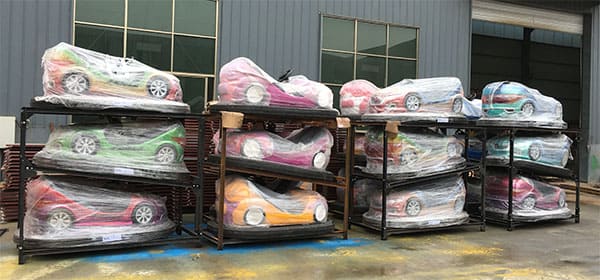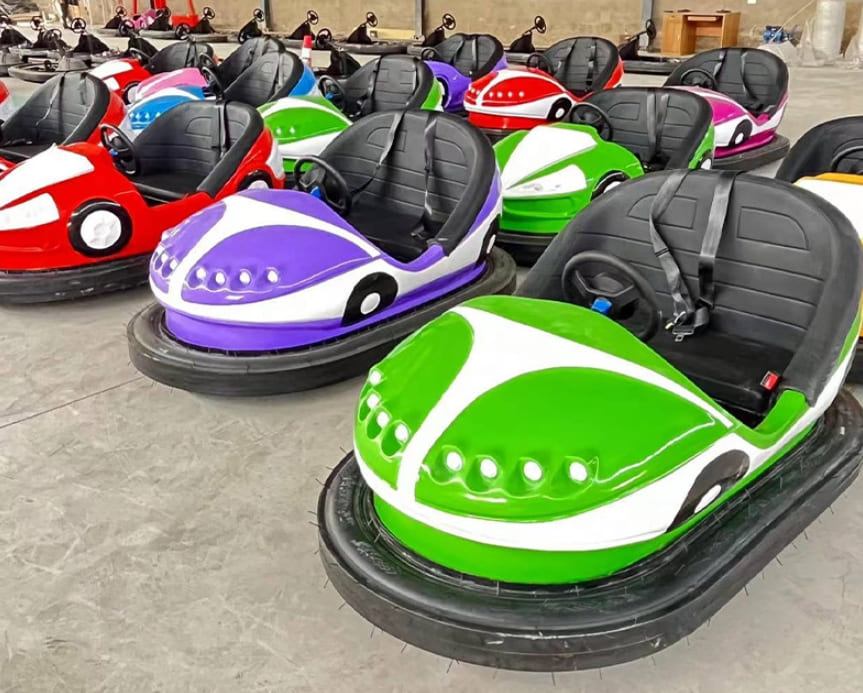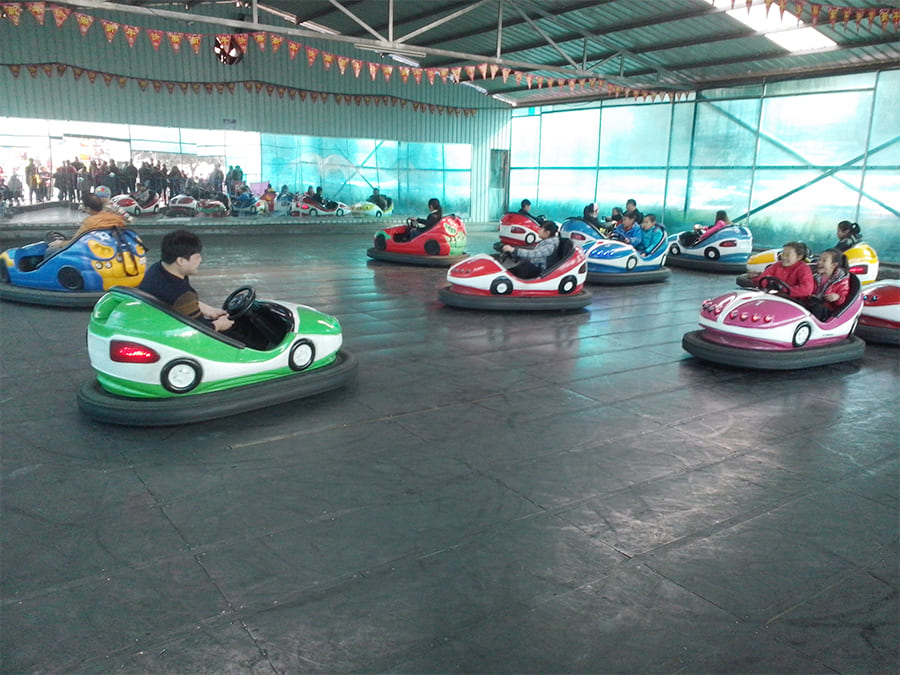Deciding between indoor and outdoor go-karts or business can be a mess. Each has its pros and cons depending mainly on you and what you like. Let’s look at these two types of karting environments to help you decide where you should go for your karting needs and what kind of business to start.
Indoor / Outdoor Karting Advantages & Disadvantages
Indoor go-karting has a few things you might like depending on the casual racer, someone with little kids, or corporate events. Here are some of the features you’ll run into at an indoor karting facility..
Indoor Karting Advantages
- Weather Factors: Indoor tracks are not affected by the weather, so they deliver a consistent experience.
- Safety: The small, contained environments of indoor karting seem to make it safer and make it attractive to beginners..
- Technical Layout: Indoor karting tracks tend to be tight and technical, focusing more on driving.
- Location: Because they are often near town, indoor tracks are convenient for most people and avoid the normal long hauls to the track.
- Family-Friendly: These places are family-friendly and cater to events you might have.
Indoor Karting Disadvantages
- Tight Areas: Because the tracks are only so big, there aren’t very many places to pass.
- Slower Speed: Because of the tiny tracks, the higher speeds you’ll see from outdoor karts aren’t there to give you that rush.
People that like racing or working on their cars prefer outdoor karting.
Oudoor Karting Advantages
- Bigger Space: The tracks are bigger and generally have more opportunities for passing.
- Faster Speed: They are faster because they’re outside and open.
- Better Experience: These tracks are outdoors in the open air, which gives you the true racing feel.
- Competitive Opportunities: Because the tracks are bigger, racing on your outdoor track is generally better.
Outdoor Karting Disadvantages
- Weather Dependency: These tracks are outside. So, if it’s raining, snowing, or 120 degrees, you’re not going to get on the track.
- Bigger Mess Ups: Because the track is open and fast, you get going a lot faster. If you run off the track, you’re going to go a lot further than you will indoors.
Ultimately, the decision between indoor and outdoor go-karts is yours along with your goals: indoor karting generally is good for a controlled setting any time of the year and focused more on the technical aspect of driving. Outdoor karting is for those who want to go fast and are motivated by that along with really racing against people.
What is the Difference Between Indoor and Outdoor Go-Karts?
When deciding whether to race indoor or outdoor go-karts, it’s important to know that there are some differences in the karts themselves. Here’s what you need to know about indoor vs. outdoor go-karts.
Track Size and Design
- Outdoor tracks: Big tracks with lots of room to go fast and pass people; usually for better drivers.
- Indoor tracks: Small, twisty tracks with tight turns that sometimes have two levels for extra fun.
Speed
- Outdoor karts: Go faster because they have the space to do it, so they’re good for speed demons.
- Indoor karts: Go slower, which can be a good thing if you’re new to racing or you’re just having fun.
Weather Restrictions
- Outdoor karting: You can’t race outside when it’s raining or snowing, so you might have to cancel your plans.
- Indoor karting: You can race inside anytime, day or night, no matter what’s going on outside.
Safety
- Indoor tracks: Indoor tracks are usually safer because they are inside and have remote controls to stop the karts if there’s a problem.
- Outdoor tracks: A big place exposes drivers to different types of surfaces and weather, which means more risks.
Accessibility
- Indoor karting: Indoor tracks are usually in the city or close to it, making it easy for most people to get to.
- Outdoor karting: The big tracks are usually out in the country or in the suburbs, so you might have to drive a little bit to get there.
Target Clients
- Indoor karting: Indoor tracks are good for beginners and families because they’re safe and easy to understand.
- Outdoor karting: The big tracks are for people who have raced before and want to go fast and race other people.
How Do You Get Faster at Indoor Go-Karting?
If you want to get better at indoor karting, here are some tips to help you.
- Sit in the Right Spot: Get comfortable and make sure you can reach everything.
- Learn the Fast Way: Figure out the best way to go around the corners.
- Be Smooth: Don’t jerk the wheel or the gas or the brake.
- Consistent Speed: Keep up the speed. Don’t go fast and then slow down.
- Body Position: Move your body to help the kart turn.
- Cornering Approach: Focus on entering and leaving corners quickly and cleanly.
- Don’t Hit Stuff: Try not to run into other karts or the walls.
- Follow Fast Guys: Watch people who are faster than you to see what they do.
- Practice: The more you drive, the better you’ll get, so try different tracks.
- Have Fun: The more fun you have, the better you’ll drive.
How Much Does Weight Affect Indoor Karting?
Weight is a huge deal in karting. It affects speed and handling. Here’s how weight impacts your performance in indoor karting.
- Speed: A heavier driver makes the kart work harder to go the same speed as a lighter driver. For example, it’s said that about 10 kg (22 lbs) of extra weight can slow you down by about 0.3 to 0.5 seconds per lap, depending on the kart and track.
- Lap Times: The effect of weight on lap times can vary a lot based on things like the type of kart (rental vs. competitive), track conditions, and your driving style. For example, in rental karts, you might see a difference of around 0.3 seconds per 10 kg, while in faster karts, the difference could be more.
- Stability: A heavier driver might feel the kart behave differently because their weight changes how the kart responds to acceleration and braking. Staying smooth and not making any sudden moves will help you keep the kart under control.
- Practical Examples: Drivers racing in different weight classes often notice big time differences; people have done tests where they put on weight (like a 20 kg vest) and see big changes in lap times, which goes to show that weight does make a difference when you’re racing for real.
- Electric vs. Gas-Powered Karts:
- Electric Karts: In electric karts, weight might not affect acceleration as much because electric motors make so much torque right away. Some heavier drivers might even find they get better traction on slippery surfaces.
- Gas-Powered Karts: On the other hand, gas karts usually see bigger changes in performance based on driver weight because they need to stay in the power band.
Conclusion
Indoor and outdoor karting both have different things to offer. Indoor karting is great if you’re looking for a technical challenge in a controlled environment. Outdoor karting is better if you want to go faster and get a more authentic racing experience.







